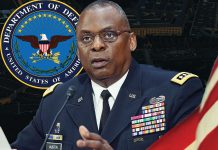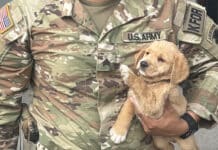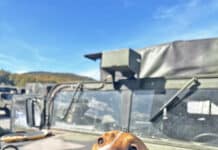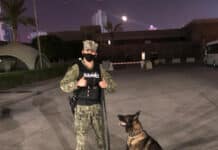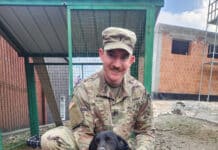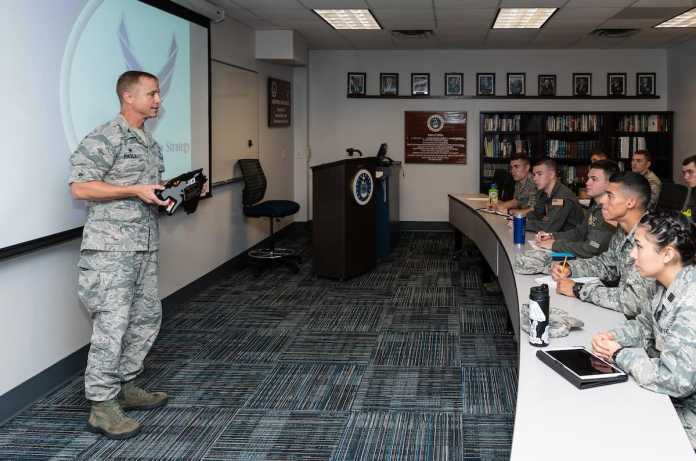
DAYTONA BEACH, Fla. – From Bosnia to Korea and assignments to the South Pole and Joint Typhoon Warning Centers in Guam and Hawaii, U.S. Air Force Col. Jason Patla has been all over the world providing weather intelligence to the U.S. Army and Air Force.
With a specialty in tropical cyclones and climatology, the aviation and space forecasts from his squadrons aided four-star generals and admirals in their decision-making processes whether dealing with air strikes or other ground and air operations.
With 24 years in the Air Force, Col. Patla, who is also a private pilot, has a host of experience to share with cadets as the new commander for the Air Force Reserve Officer Training Corps (AFROTC) Detachment 157 on Embry-Riddle Aeronautical University’s Daytona Beach Campus. He replaces Col. Kimberley Ramos, who retired from the Air Force after 30 years.
One of the largest AFROTC programs nationally and one of the top pilot-producing detachments for the Air Force, the program includes cadets from Embry–Riddle, Bethune-Cookman University, Daytona State College, the University of Central Florida-Daytona Beach Campus and Stetson University, which joined the detachment this semester.
Patla knows firsthand the importance of a university ROTC program. He entered the Air Force in 1994 through the ROTC at Purdue University, where he received a bachelor’s in Atmospheric Science, after previously serving in the Army Junior ROTC in high school.
“I feel this is paying back to the service and organization that helped me get to where I am,” Patla said. “I have a lot of respect for what the cadre (instructors) do and I have a lot of empathy for the cadets going through academic rigors coupled with the physical rigors.”
With about 380 in the overall program, Patla, who also teaches a national security and commissioning preparation class, is focused on instilling in the cadets what he learned from his service – responsibility, accountability, professionalism and leadership.
“I’m absolutely humbled to have been accepted into this position,” said Patla, who is passionate about aviation and STEM (science, technology, engineering and math). “Given the staff I have here as part of this amazing program, my goal is to continue moving it forward and developing premier second lieutenants to lead our Air Force in the upcoming decades.”
Prior to coming to Embry-Riddle, Patla led more than 550 active duty, civil service and contract personnel from six squadrons based on three continents as commander of the 2nd Weather Group, 557th Weather Wing, at Offutt Air Force Base in Nebraska. The group operates and sustains the Air Force’s $322 million strategic weather enterprise, delivering decision-quality, authoritative space and terrestrial environmental intelligence in support of national security objectives.
With a Ph.D. in Climatology and two master’s degrees in Tropical Meteorology and Strategic Studies, Patla served in numerous roles as commander and chief of weather squadrons and weather groups, including chief of Pacific Air Forces Weather Operations Branch establishing weather policy and ensuring the readiness of weather units and personnel to support the U.S. Pacific Command combatant commander.
“He is a fantastic mentor and an excellent role model with a Ph.D., showing our students the breadth and opportunities the military has to offer for those who wish to serve,” said Karen Gaines, Ph.D., professor and Dean of Embry-Riddle’s College of Arts and Sciences.
Through his experiences providing aviation forecasts and forecasts pertaining to solar storms or possible cyberattacks to satellite systems, he hopes students see how the science of meteorology works together with Air Force operations as part of every planning process.
“I want to send our graduates into the world with an appreciation of the natural environment and how it applies to what they will be doing on active duty, no matter if they are going to be a pilot, navigator, engineer, or any specialty in the Air Force,” Patla said.
ABOUT EMBRY-RIDDLE AERONAUTICAL UNIVERSITY
Embry-Riddle Aeronautical University is the world’s largest, oldest and most comprehensive institution specializing in aviation, aerospace, engineering and related degree programs. A fully accredited university, Embry-Riddle is also a major research center, seeking solutions to real-world problems in partnership with the aerospace industry, other universities and government agencies. A nonprofit, independent institution, Embry-Riddle offers more than 80 baccalaureate, master’s and Ph.D. degree programs in its colleges of Arts & Sciences, Aviation, Business, Engineering and Security & Intelligence. The university educates students at residential campuses in Daytona Beach, Fla., and Prescott, Ariz., through its Worldwide Campus with more than 125 locations in the United States, Europe, Asia and the Middle East, and through online programs. For more information, visit www.embryriddle.edu, follow us on Twitter (@EmbryRiddle) and facebook.com/EmbryRiddleUniversity, and find expert videos at YouTube.com/EmbryRiddleUniv.
All content herein is owned by author exclusively. Expressed opinions are NOT necessarily the views of VNR, authors, affiliates, advertisers, sponsors, partners, technicians, or VT Network. Some content may be satirical in nature.
All images within are full responsibility of the author and NOT VNR.
Read Full Policy Notice - Comment Policy








